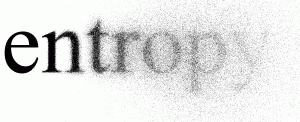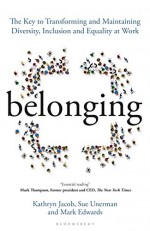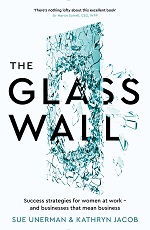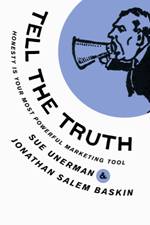 I’ve been invited to give the key note speech at this year’s MRG conference in December. If you’re going I look forward to seeing you there. I’m flattered to be asked, and the organisers have given me an open brief, what an opportunity!
I’ve been invited to give the key note speech at this year’s MRG conference in December. If you’re going I look forward to seeing you there. I’m flattered to be asked, and the organisers have given me an open brief, what an opportunity!
The theme of the conference is “Celebrating the best media research of 2013” which has left me contemplating what it takes to be the best in media research. I don’t think the MRG needs me to announce that we’re in times of great change or that the expectations of media research from the planning and buying community have risen exponentially in these days of “real time”, “neuroscience” and “big data”.
Is “best” the simplest, most proximate explanation, or is “best” the most truthful? The industry wants the former often for pragmatic reasons. If it’s simple and scale-able it’s useful for planning and trading. This simplistic approach based on a need for trading standard has delivered solid growth for the advertising industry.
If it’s simple it may be less truthful. For a very good reason, which is that the truth about how people make decisions is complicated.
The drive for truth (which I think we all know I favour) leads inevitably to more complexity. Understanding what truly motivates people can help with predicting future behaviour which is a basic requirement of media research. After all planners and buyers don’t just want to understand what has happened. They want to predict what will happen in order to create better outcomes for future campaigns.
In the excellent collection “This explains everything” edited by John Brockman, two of the contributors provide an explanation for why this is easier said than done. David M. Eagleman, neuroscientist at Baylor College of Medicine, writes of “Overlapping solutions”, where the brain is not made up of separate parts that each deal with different activities ie one area for language, another for face recognition etc. Instead he says : “The deep and beautiful trick of the brain is more interesting. It provides multiple, overlapping ways of dealing with the world.”
This is echoed by psychology researcher Judith Rich Harris who explains that the “modular” brain is the root reason for a good deal of the drama in our lives and our literature, movies, plays and soap operas. It is what leads one part of us to do something that another part of us knows is wrong. The affair, the cream cake, the hangover and the speeding ticket all come about because if a bit of our brain is arguing against rash behaviour, another part of our brain is all for it. We do have an angel and a devil on either shoulder arguing about what we should do. In Romeo and Juliet the Capulets and Montagues had a longstanding family feud. So the “belonging” instinct or human drive in our hero and heroine would have dictated more hatred. Yet the “young love” or should I just call it the “sex” drive in the same characters drove Shakespeare’s plot line.
This sheds a different light on our hopes from media research. We can’t expect to explain everything, whatever the developments in techniques in neuroscience or big data, not unless or until we can predict the outcomes of those internal “neural” battles that Eagleman describes.
Current best practice media research might be good enough. Good enough for trading and good enough for broad predictions. I want the truth however and new developments are challenging the heritage businesses as they should.
If you’d like to tell me your current view of media research for my keynote please comment below.




Becoming a legend takes more than measurable performance
Thursday, November 21st, 2013Evan Kearney from O&M Memac explained the thinking behind the Sprite Cricket Stars competition in UAE. Designed to drive penetration amongst immigrant labourers, Kearney painted an emotional picture of men, miles away from home, working to build luxury buildings for a pittance, who have little in their lives of any pleasure bar cricket.
It’s a story worth watching on YouTube for the targeting insight and the monumental and inclusive execution.
It’s clear from the story, for those in ignorance as I was, the huge esteem cricket and its star players are held in across the world.
This week one of those stars just hung up his bat. Sachin Tendulkar, who retired this month, is widely acknowledged as one of the greatest cricketers of his generation. Writing at bbc.co.uk author and politician Sashi Tharoor holds nothing back in his eulogy of the cricket star. He says “Tendulkar was the diminutive colossus who showed his countrymen that an Indian, too, could be the world’s best. He was elevated to God in the country’s cricketing pantheon.” And concludes : “Thanks to his extraordinary achievements, he has raised the bar for all who have followed him. He came in when a heroic defeat was more common than a blazing triumph. He leaves having made winning the new normal.”
Well, it must be of interest therefore, especially in a sport notorious for statistic geeks, that the stats suggest that Tendulkar wasn’t that outstanding. Of course it all depends how you look at it, and he’s certainly a very good cricketer, yet his batting average was 53.78. Australia’s Donald Bradman averaged 99.94. You can examine the detailed statistics here, but the conclusion places Tendulkar as 29th greatest in the ICC player ratings, not quite the world’s best.
How then has he attained such a reputation for greatness? Mail writer Harcharan Chandhoke says he was simply in the right place at the right time. His career coincided with the resurgence of the Indian economy as one of the BRIC nations dominating the 21st century. He provided the focus for a nation as it rose to prominence on a global stage.
Two lessons here for the workplace. First, be careful to look at the facts behind someone’s reputation. Our industry is scattered with people living well on their reputation which might be based on one or two moments of greatness followed by years of stasis. Secondly, you can’t just measure greatness by statistics. There’s more to becoming a hero than facts and figures. Being in the right place at the right time of course helps. Being a focus for hopes and dreams is essential.
Posted in MediaComment | No Comments »